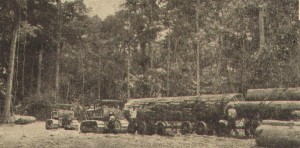Contents
Our Books
Book 1
[toggle title=”A History of Enterprise in Belize”]Release Date: July 2013
Contents
- Prologue
- [icon_link style=”link” color=”blue” href=”https://belizeinfocenter.org/wp-content/uploads/2013/05/Belize-Industries-Map.pdf” target=”_blank”]Industries Map[/icon_link]
- [icon_link style=”link” color=”blue” href=”https://belizeinfocenter.org/wp-content/uploads/2013/05/The-main-industries-which-have-developed-in-Belize.pdf” target=”_blank”]As synopsis of the industries which have developed in Belize[/icon_link]
Chapter 1 Forestry-slavery, technology-democracy
- [icon_link style=”link” color=”blue” href=”https://belizeinfocenter.org/wp-content/uploads/2013/05/The-Logwood-Industry-and-the-Birth-of-Belize.pdf” target=”_blank”]Logwood ≈ Mid 1600s[/icon_link]
- Mahogany ≈ 1770s
- Chicle ≈ 1880s
- Pine ≈ 1920s
- The Forest Trust ≈ 1922
- The stagnation of forestry and the rise of agriculture ≈ 1950s
Chapter 2 Corn, Cane and Immigrant Farmers
- Agriculture before colonization
- Corn ≈ 4,000 BC
- Fisheries ≈ Mid 1,700s
- Sugarcane ≈ 1848
- Coconuts ≈ 1870s
- Bananas ≈ 1880s
- [icon_link style=”link” color=”blue” href=”https://belizeinfocenter.org/wp-content/uploads/2013/05/The-Pioneers-of-the-Citrus-Industry-of-Belize.pdf” target=”_blank”]Citrus ≈ 1913[/icon_link]
- [icon_link style=”link” color=”blue” href=”https://belizeinfocenter.org/wp-content/uploads/2013/05/The-Notable-Personalities-who-have-contributed-to-the-Rice-Industry-of-Belize.pdf” target=”_blank”]Rice ≈ 1919[/icon_link]
- Beans ≈ 1919
- Vegetables ≈ 1934
- Beef and Dairy ≈ 1,946
- Pineapple ≈ 1952
- Cacao ≈ 1954
- Honey ≈ 1957
- Cashew and Peanuts ≈ 1950s
- Broilers and Layers ≈ 1958
- Mangoes ≈1966
- Hot peppers ≈ 1982
- Aquaculture ≈ 1982
- Papayas ≈ 1986
- Potatoes and Onions ≈ 1999
Chapter 3 Water, communication, electricity and other essential services
- Water and sewerage ≈ Mid 1600s
- Healthcare ≈ 1874
- 128Communications ≈ 1875
- Telecommunications ≈ 1902
- Banking and financial services ≈1902
- Electricity ≈ 1906
- Commuter transport ≈ 1906
- Air Travel ≈ 1921
- Radio ≈ 1937
Chapter 4 The tourism service sector
- [icon_link style=”link” color=”blue” href=”https://belizeinfocenter.org/wp-content/uploads/2013/05/The-Evolution-of-the-Toursim-Industry-of-Belize.pdf” target=”_blank”]Accommodations and Tours ≈ 1980s[/icon_link]
- Environmental Protection ≈ 1989
Chapter 5 The geographers of Belize
- Maps ≈ 1808
- Resource surveys ≈ 1882
- Geologic surveys ≈ 1927
- Oil ≈ 1938
Chapter 6 The sports and entertainment industry
- Music and Entertainment ≈ Early 1700s
- Sports ≈ Late 1800s
- Television ≈ 1980
Epilogue: Wild West or Frontier town? Our Future Industries
Glossary
Appendix I
Appendix II
Bibliography
Index
List of Boxes
- Box 1: The Belize Estate and Produce Company (BEC)
- Box 2: Mr. Robert Sydney Turton
- Box 3: Rosewood
- Box 4: Xate
- Box 5: The PUP and the transition from forestry to agriculture
- Box 6: Genetically Modified Organisms (GMOs)
- Box 7: Tobacco
- Box 8: The Rum Industry
- Box 9: The Banana War
- Box 10: Cotton, Silkgrass and Ramie
- Box 11: Cohune
- Box 12: Cassava
- Box 13: Belize Agricultural Health Authority (BAHA)
- Box 14: Agriculture Show
- Box 15: Sponges
- Box 16: Internet Based Companies
- Box 17: The UDP and the transition from agriculture to tourism
Book 2
[toggle title=”BELIZE Facts and Figures”]Release Date: December 2013
Contents
Introduction
The National Symbols
- The Flag
- The National Tree
- The National Flower
- The National Animal
- The National Bird
The Population
- Ethnicity
- Religion
The Districts
- Corozal
- Orange Walk
- Belize
- Cayo
- Stann Creek
- Toledo
Geography
- Geology
- Geologic History
- Soils
- Climate
- Rainfall
- Rivers
Transportation
- Roads and Highways
- Air Travel
- Marine transport
- Sea Ports
Belize Ecosystems
- Marine Ecosystems
- Open Sea
- Coral Reefs
- Seagrass beds
- Mangroves
- Terrestrial ecosystems
- Savannas
- Broadleaf forests
- Pine Forests
- Freshwater Ecosystems
- Protected Areas
- Biodiversity
The Belizean cultures
- The Maya
- The British
- The Africans
- The Creoles
- The Garinagu
- The Mestizo
- Americans
- The East Indians
- The West Indians
- The Mennonites
- Central Americans
- Taiwanese and Nigerians
The Arts in Belize
- Music
- Performing arts
- Visual arts
A Brief History of Belize
- 15,000 BC-7,000 BC
- 7,000 BC-2,500 BC
- 2,500 BC-1,500 AD
- 1502 -1641
- 1638 – 1871
- 1871-1950
- 1950-1964
- 1964-1981
- Post 1981
The Belize-Guatemala Dispute
Government
- The constitution
- The three branches
- The judicial branch
- The legislative branch
- The executive branch
- How laws are made
- The Relationship among the Executive, Legislature and the Judiciary
- The Alcalde System
- The Ombudsman
- Political parties and elections
- Non-Governmental Organizations (NGOs)
The financial system
Social Security
Taxes
The Economy
The Industries
- The Sugar Industry
- The Banana Industry
- The Citrus Industry
- The Fishing Industry
- The Aquaculture Industry
- The Papaya Industry
- The Petroleum Industry
- The Tourism Industry
Industry and Professional Associations
Labor Unions
Conducting Business
- Essential Business Processes
- Real Estate
- Public and Bank Holidays
Education
Health
Energy
Telecommunications
Our Central American Neighbors
Our CARICOM Partners
[/toggle]Book 3
[toggle title=”Maya, Mahogany Men and Mennonites”]Release Date: December 2013
The Technology and Science of The Cultures
Of Belize
Contents
- Chapter 1 Farming and the development of Maya civilization
- Chapter 2 Spanish dogma and native resources
- Chapter 3 Buccaneers and big business in Europe
- Chapter 4 The African contribution
- Chapter 5 Cassava, the Garinagu staple
- Chapter 6 Mexicans and sugar in Belize
- Chapter 7 American Confederate farming technology
- Chapter 8 Hindus, West Indians and Chinese
- Chapter 9 The Mennonites’ from Quellen Colonie
- Chapter 10 Central Americans, Taiwanese and Nigerians
- Epilogue Remembering the past but building a future
- Glossary
- Bibliography
- Index


